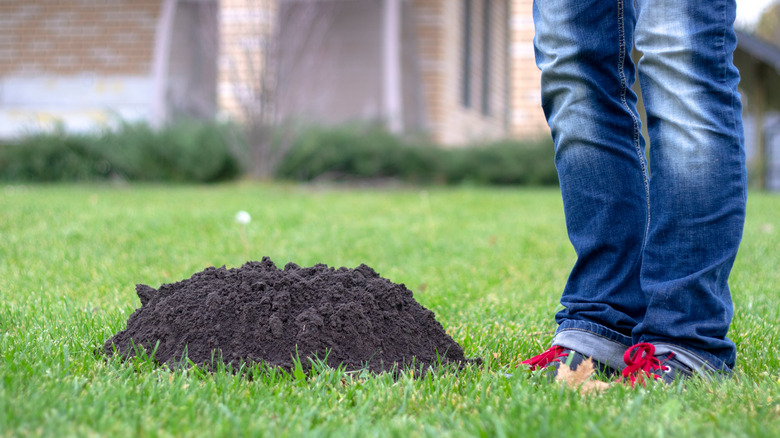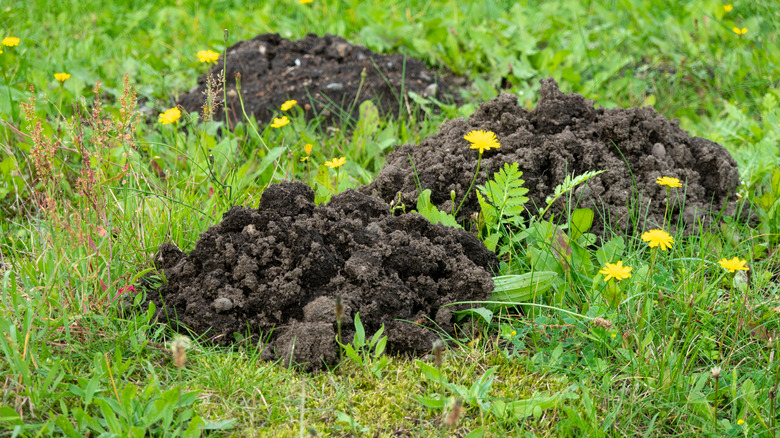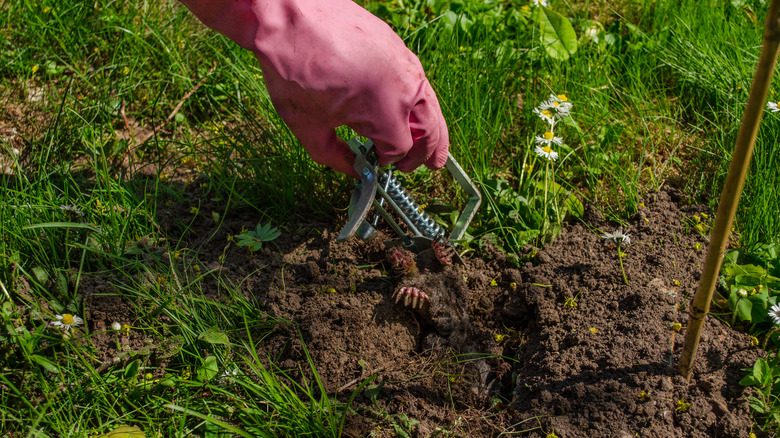How Can You Take Care Of Mole Holes In Your Lawn?
Moles are a common pest problem, wreaking havoc across lawns despite being only approximately 7 inches long and weighing about 4 ounces. In just one hour, a mole can dig an 18-foot tunnel in search of food. Primarily active in spring and fall, they like to munch on earthworms and grubs. These little creatures offer some benefits, like soil aeration and dispersing nutrients, but many would agree they're not worth the fallout.
The sure sign that you have a mole problem is mounds of dirt littered across the lawn. As moles travel underground, they rip apart the roots of grass and plants in their wake, resulting in a wilting yard. The first step in repairing mole damage is getting rid of the moles themselves. You can attempt to remove them yourself by setting up barriers or traps, but hiring a professional is the surest and safest method. If you repair your lawn without being certain the mole is gone, you'll likely find it in disarray again shortly after. Once the burrowing mammal is no longer present, you can begin repairing the veining damage and dirt mounds by tilling the soil and planting new sod.
Patching up mole damage
While patching up mole damage isn't necessarily hard, it can be time-consuming. In one day, a mole can dig 100 feet and leave six molehills behind. Each day a mole is not taken care of means continued damage to your lawn, often at a rapid pace. Before cleaning up your yard, ensure that the tunnels and holes you're filling are empty. A great way to know if a mole is still hiding in a tunnel is by digging or puncturing a 1- to 2-inch hole into it — a screwdriver works well for this. If the hole gets covered within one or two days, you still have a mole squatting there.
Once you're confident that all tunnels are clear of the rodent, you can patch up the veins on your lawn. Flatten all the tunnels — either by hand or foot or with gardening tools — and till the soil. Plant new grass seed where needed, compacting and covering it with peat moss. Grass takes one to two weeks to germinate and should be watered consistently at least three times a day. You should also avoid mowing fresh grass until it reaches 3 inches. Fixing up molehills is very similar to mending the tunnels. Start by removing all loose dirt and filling the holes with a mixture of sand, soil, and compost if desired. Till the surface and apply the seed, caring for it just as you would with veining repair.
Removing and preventing moles
Removing and preventing moles can be tricky, as these are small and fast creatures. Avoid flooding tunnels to remove them — this won't kill them and will only damage your yard further. You might even make your soil easier for moles to burrow into. Using poison bait can kill other wildlife and possibly harm your pets, and while insecticides will decrease a mole's food source, they will also eliminate beneficial insects from your garden. Luckily, there are safe ways to remove moles from your yard. One of the easiest is catching them with humane traps and releasing them at least 5 miles from the area. It's important to always use safety gear when handling moles, dead or alive, as they can carry diseases.
Aside from catching and releasing, moles can be deterred with a water, dish soap, and castor oil mixture. Apply it to the lawn and in any tunnels. Ultrasonic and noise devices can also steer moles away, and certain odors — such as bloodmeal, bone meal, and fox urine crystals — can trick them into thinking a predator is nearby. To prevent moles from entering your garden, consider creating borders with repelling plants like daffodils, marigolds, and those in the allium family. You can also dig a trench and fill it with stones and rocks to create a physical barrier they can't surpass. Lastly, moles prefer to wade through soft and moist soil, so consider planting grass that does well in drier conditions.


